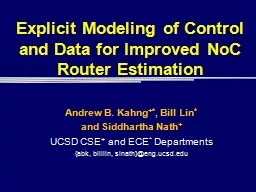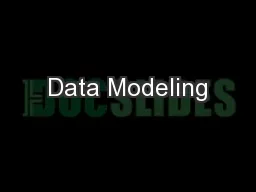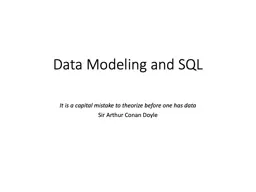PPT-Explicit Modeling of Control and Data for Improved
Author : kittie-lecroy | Published Date : 2016-10-21
NoC Router Estimation Andrew B Kahng Bill Lin and Siddhartha Nath UCSD CSE and ECE Departments abk billlin sinath engucsdedu Outline Motivation
Presentation Embed Code
Download Presentation
Download Presentation The PPT/PDF document "Explicit Modeling of Control and Data fo..." is the property of its rightful owner. Permission is granted to download and print the materials on this website for personal, non-commercial use only, and to display it on your personal computer provided you do not modify the materials and that you retain all copyright notices contained in the materials. By downloading content from our website, you accept the terms of this agreement.
Explicit Modeling of Control and Data for Improved: Transcript
Download Rules Of Document
"Explicit Modeling of Control and Data for Improved"The content belongs to its owner. You may download and print it for personal use, without modification, and keep all copyright notices. By downloading, you agree to these terms.
Related Documents














